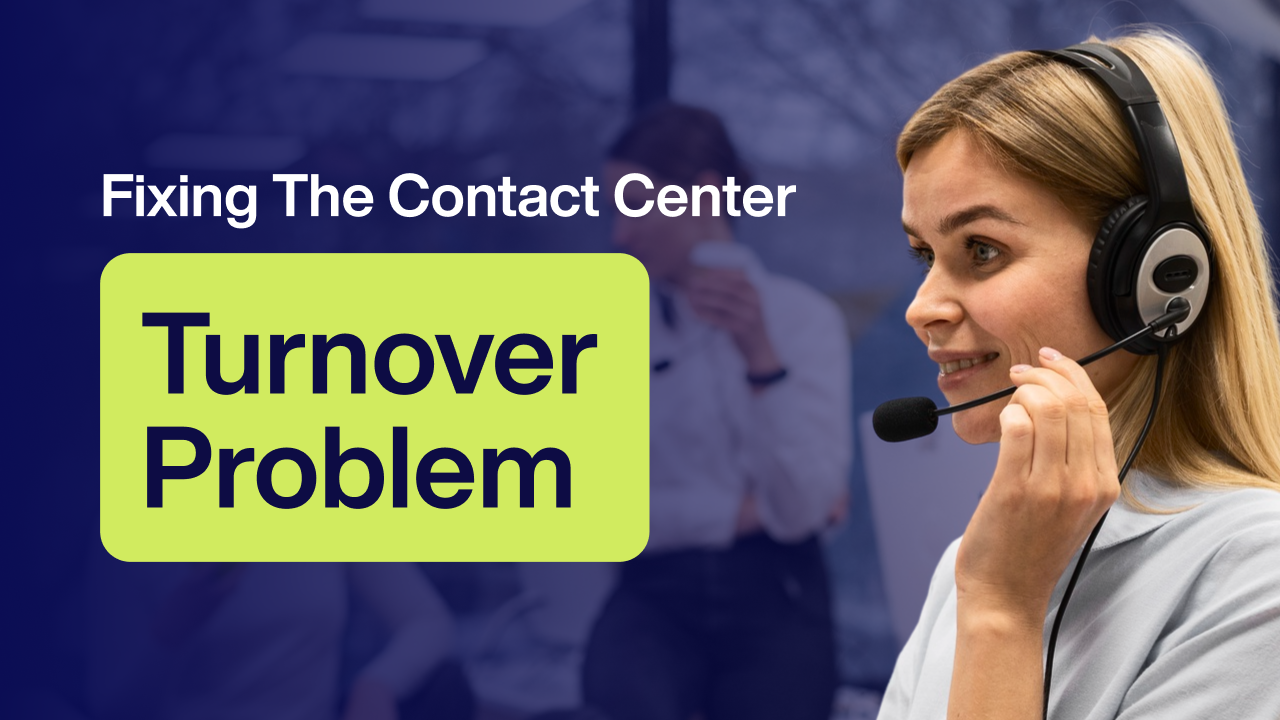Expanding Medicare and Dual-Eligible Outreach: A Strategic Imperative for FQHCs

Introduction: Navigating Flat Medicaid Funding with Strategic Outreach
Federally Qualified Health Centers (FQHCs) are at a pivotal juncture. With Medicaid funding remaining stagnant and operational costs escalating, these centers face the challenge of maintaining financial viability while continuing to serve vulnerable populations. One promising avenue is expanding outreach to Medicare beneficiaries and dual-eligible individuals—those eligible for both Medicare and Medicaid.
Dual-eligibles, comprising approximately 20% of Medicare enrollees, account for a disproportionate share of healthcare expenditures due to complex health needs . By effectively engaging this demographic, FQHCs can diversify their payer mix, enhance care coordination, and improve health outcomes. Leveraging artificial intelligence (AI) technologies can further streamline operations, personalize patient engagement, and optimize resource allocation.Wikipedia+1Commonwealth Fund+1
1: AI-Driven Patient Identification and Outreach
Process: Implementing AI algorithms to analyze existing patient data can help identify individuals who are likely dual-eligible but not yet enrolled. By cross-referencing electronic health records with socioeconomic indicators, FQHCs can proactively reach out to these patients, guiding them through the enrollment process.
Product: AI-powered platforms can automate the dissemination of personalized communication, such as reminders for Annual Wellness Visits (AWVs) or information about available services. These tools ensure timely and relevant interactions, increasing patient engagement and adherence to care plans.
People: Training staff to interpret AI-generated insights is crucial. Healthcare providers and administrative personnel must collaborate to act on these insights, ensuring that outreach efforts are culturally sensitive and tailored to individual patient needs.
2: Enhancing Care Coordination Through AI
Process: AI can facilitate seamless care coordination by integrating data from various sources, providing a comprehensive view of a patient's health status. This holistic perspective enables care teams to develop personalized care plans, reducing redundancies and improving efficiency.
Product: Utilizing AI-driven decision support systems can assist clinicians in identifying potential health risks and recommending preventive measures. These systems analyze patterns and predict outcomes, aiding in early intervention and reducing hospitalizations.
People: Empowering care coordinators with AI tools enhances their ability to manage complex cases effectively. Continuous training ensures that staff can leverage technology to its fullest potential, fostering a proactive approach to patient care.
3: Real-World Applications and Outcomes
A study analyzing Medicare data from 2008–2010 found that dual-eligible individuals who utilized FQHCs experienced fewer hospitalizations for ambulatory care–sensitive conditions compared to those who did not. Specifically, there were 16% and 13% fewer hospitalizations among Black and Hispanic populations, respectively .PubMed Central
Additionally, integrating AI tools has shown promising results in enhancing patient engagement. For instance, platforms that automate appointment reminders and follow-ups have led to increased attendance rates for AWVs, a critical component in managing chronic conditions among the elderly .ThoroughCare
Conclusion: Embracing Innovation for Sustainable Growth
In the face of static Medicaid funding, FQHCs must explore innovative strategies to sustain and expand their services. Targeting Medicare and dual-eligible populations presents an opportunity to diversify revenue streams while addressing the needs of a high-risk demographic.
The integration of AI technologies into patient identification, outreach, and care coordination processes can significantly enhance efficiency and effectiveness. By embracing these tools, FQHCs can improve health outcomes, reduce disparities, and ensure long-term sustainability.
FQHCs should assess their current patient demographics and identify opportunities to expand services to Medicare and dual-eligible individuals. Investing in AI technologies and staff training will be pivotal in this endeavor. By taking proactive steps now, FQHCs can position themselves to better serve their communities and thrive in an evolving healthcare landscape.

No Spam —
Just Good Stuff.
Join our newsletter for actionable advice, insider knowledge, and strategies that drive real results.
No fluff, just value.
.png)
%20(1).png)
From The Blog
Read All Articles
Hybrid AI Voice Bots: Better CX, Happier Agents, and Smarter Schedules

Hybrid AI in Banking: Handling Complex Service Without Losing the Human Touch

Hybrid AI for Financial Services: Solving Complex Service Without Losing the Human Touch

How Hybrid AI Reduces Patient No-Shows and Scheduler Burnout

Hybrid AI That Actually Moves the Needle in Healthcare RCM

How AI-Human Collaboration Elevates Quality Assurance on the Factory Floor

Why Nearshore Hybrid BPOs Outperform Offshore Automation Centers

How Hybrid AI Voice Bots Elevate CX and Make Agents Unstoppable

AI‑Human Hybrid Support That Elevates Fraud Detection and Compliance

How Hybrid AI Streamlines Healthcare Revenue Cycle—Without Losing the Human Touch

AI-human hybrid quality assurance for supply chain accuracy

Why Nearshore Hybrid BPOs Outperform Offshore Automation Centers

AI + Human QA on the Line: How Hybrid Teams Raise Manufacturing Quality

Why Nearshore Hybrid BPOs Outperform Offshore Automation Centers

How AI-Human Collaboration Elevates Quality Assurance in Modern Manufacturing

Hybrid AI That Keeps Schedules Full: Reducing Patient No‑Shows and Burnout

Why Nearshore Hybrid BPOs Outperform Offshore Automation Centers

Hybrid AI That Quietly Fixes Healthcare RCM—Starting With the Schedule

How AI-Human Collaboration Raises the Bar on Manufacturing Quality Assurance

How Hybrid AI Tackles the Toughest Banking Service Moments

AI + Human QA: How Hybrid Teams Catch Defects Early and Strengthen Audits

How Hybrid AI Cuts Churn in Telecom and Retail—Without Losing the Human Touch

Hybrid AI for Financial Services: Faster Resolution, Stronger Compliance, Human-Centered Support

Hybrid AI That Fills Schedules and Eases Burnout: Reducing Patient No-Shows in Healthcare

Hybrid AI-human support that strengthens fraud detection and compliance—without breaking customer trust

AI + Humans: Elevating Quality Assurance on the Factory Floor

AI-human hybrid quality assurance for supply chain accuracy

Hybrid AI That Keeps Schedules Full—and Clinicians Fresh

AI-Human Hybrid Support: Stronger Fraud Detection and Compliance at the Contact Center

Why Nearshore Hybrid BPOs Outperform Offshore Automation Centers

From Empty Slots to Full Days: Hybrid AI Scheduling That Reduces Burnout

From No‑Shows to Full Days: Hybrid AI That Fixes Provider Schedules Without Burning Out Staff

From Empty Slots to Full Schedules: Hybrid AI That Boosts Access and Reduces Burnout

Stop the Scheduling Spiral: Hybrid AI That Fills Schedules Without Burning Out Providers

Stop Empty Slots from Fueling Burnout: Hybrid AI-Human Scheduling for Health Systems

From Empty Slots to Full Days: Hybrid AI Scheduling for Health Systems

From Hold Music to Full Schedules: Hybrid AI That Lifts Provider Productivity Without Burning Out Staff

Stop the Scheduling Whiplash: Hybrid AI That Fills Last‑Minute Openings Without Burning Out Your Staff
.png)
Stop the Scheduling Spiral: How Hybrid AI Keeps Providers Productive and Patients Seen
.png)
AI & Financial Services: Where Compliance Meets Conversation

E-commerce's Hybrid AI Advantages: From Order Status to Complicated Returns
.png)
Customer Service & Experience East 2025 (Reuters Events)
.png)
NACHC’s Workforce Conference (formerly FOM/IT)
.png)
Healthcare's AI-Human Sweet Spot: When Empathy Meets Efficiency
.png)
Choosing the Right Contact Center Technology Stack for Your Industry
.png)
Order Management Support: Where AI Excels & Where It Fails
.png)
Customer Success vs. Customer Support: When to Use AI vs. Human Touch

687% Increase in Referral Processing in 6 Months: How One Healthcare Organization Turned Its Patient Support Around

5 Warning Signs Your Medical Referral Process Needs Immediate Attention

AI‑Powered Healthcare Contact Centers: What CX Leaders Need to Know

AI‑Powered Healthcare Contact Centers: What You Need to Know

Healthcare Contact Centers: What Others Are Just Diagnosing, EGS Has Already Solved

Real-Life Use Cases of Contact Center Automation for Cost Reduction

5 Proven Use Cases of Contact Center Automation That Cut Costs by Up to 30%

How Leading Companies Are Reducing Support Costs and Boosting Customer Satisfaction with AI

Real-Life Use Cases of Contact Center Automation for Cost Reduction

Unlocking Efficiency, Speed, and Patient Satisfaction through AI

How Healthcare Leaders Can Leverage AI to Transform Customer Experience (CX)

FQHC-Led Medicaid ACO Innovation: How Illinois is Reinventing Community Care through Value-Based Models

Expanding Access to Mental Health: How Telebehavioral Health Is Transforming Care in Frontier Idaho

Idaho’s Medicaid Expansion: Fueling Growth and Stability in Community Health Centers






















.png)


.png)
.png)
.png)
.png)
.png)
.png)
.png)
.png)
.png)
.png)



